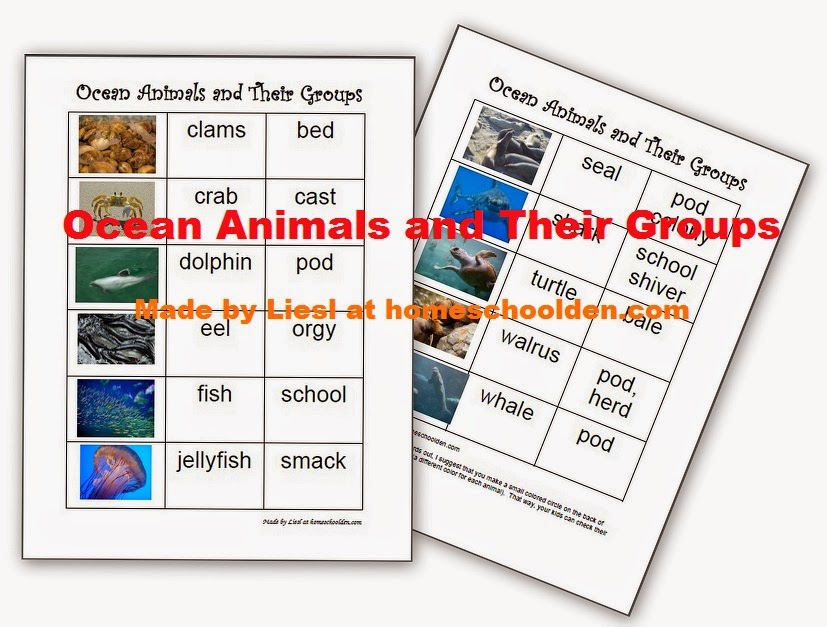Ocean Activities: The Ocean Zones

Sunlight Zone: More than 90% of marine life lives in the Sunlight Zone.
Twilight Zone: Animals that live in the twilight zone must be able to survive cold temperatures, an increase in water pressure and dark waters. There are no plants in this zone, because there is not enough light for photosynthesis. Some animals that live in this zone make their own light with bioluminescence.
Midnight Zone: No sunlight reaches this zone. It is very cold and the water pressure is high. Animals in this zone tend to be translucent or white. Many of the creatures these creatures survive by eating organic material which drifts down through the depths. Others actually feed off the earth itself, consuming bacteria produced from the methane and sulfides seeping through the ocean floor.
Trench Zone: These are the deepest trenches in the ocean. This zone is found from 6,000 meters (20,000 feet) to the bottom of the ocean. Most life is sustained by marine snow or chemical reactions around hydrothermal vents.


Animals of the different Ocean Zone Layers:
- Sunlight Zone – Blue Marlin, Sperm Whale, Grey Reef Shark, Plankton, plankton, sea stars, jellyfish, sea urchins, sea turtles, dolphins, seals, sharks, sting rays, sand dollars, fish
- Twilight Zone – Octopus, Squid, Deep diving whales, Hatchetfish, Viperfish, Cuttlefish, deep diving whales
- Midnight Zone – Angler Fish, Snipe Eel, Lizard Fish, Sea Cucumber, Lanternfish, Sea Cucumber
- Trench Zone – mussels, crabs, tube worms, viperfish
This is a glimpse of the new Ocean Zone Layers Activity Cards:

Note: The Ocean Zones Activity is available in the Ocean Unit Packet… more details about that here or down below.
The Ocean Zones Activity Packet is available for $3.00 but is included in the full Ocean Packet (below).
Be sure to check your PayPal email address for the download link. Feel free to email me if you have any questions or problems! ~Liesl
Update: We have been studying the Ocean again. Our 100+ page Ocean Unit (see details about our 65-page ocean curriculum here) is now available.
- Ocean Unit: Marine Habitats, a 20-page section on coral reefs, water form words (bay, strait, fjord, etc.), tides and currents, salinity, features of the ocean floor, Ocean Life:
- Special Body Features
- Fish Body Shape and Movement
- Biological Interactions: Mutualism and Commensalism in the Ocean
- Deep Sea Life – Bioluminescence, Anglerfish
Ocean Unit Packet AND Layers of the Ocean Activities Packet
$8.99

Ocean Tides and Currents (and activity ideas):

- You might also be interested in these free notebook pages about Earth’s 4 major systems (or ecospheres): atmosphere, geosphere, hydrosphere, biosphere. We are reviewing these before diving into our Ocean Unit (hydrosphere)

You may be interested in these related posts:
- Earth’s atmosphere (free packet)
- weather unit (free packet)
- Animal Unit: Animal Characteristics, the 5 animal groups, invertebrates, spiders vs. insects, domestic vs. wild animals, animal tracks
See you again soon here or over at our Homeschool Den Facebook Page! You might also want to check out some of our resources pages above (such as our Science, Language Arts, or History Units Resource Pages) which have links to dozens of posts. You might want to join our free Homeschool Den Chat Facebook group. Don’t forget to check out Our Store as well.
Again, if you are interested in joining our Homeschool Den Newsletter, feel free to subscribe here. The Welcome Series includes 5 packed emails… with tips on homeschooling, keeping motivated, finding various resources and freebies tucked away on the blog and more!
Plus, you’ll be the first to hear about new packets (generally offered at a discount when they are first released), seasonal resources and more!

Happy Homeschooling!!
~Liesl
















































































2 Responses
[…] We did an activity about the ocean zones where we talked about which ocean creatures lived at the various ocean depths. Visit that post here: the Ocean Zones. […]
[…] We did an activity about the ocean zones where we talked about which ocean creatures lived at the various ocean depths. Visit that post here: the Ocean Zones. […]